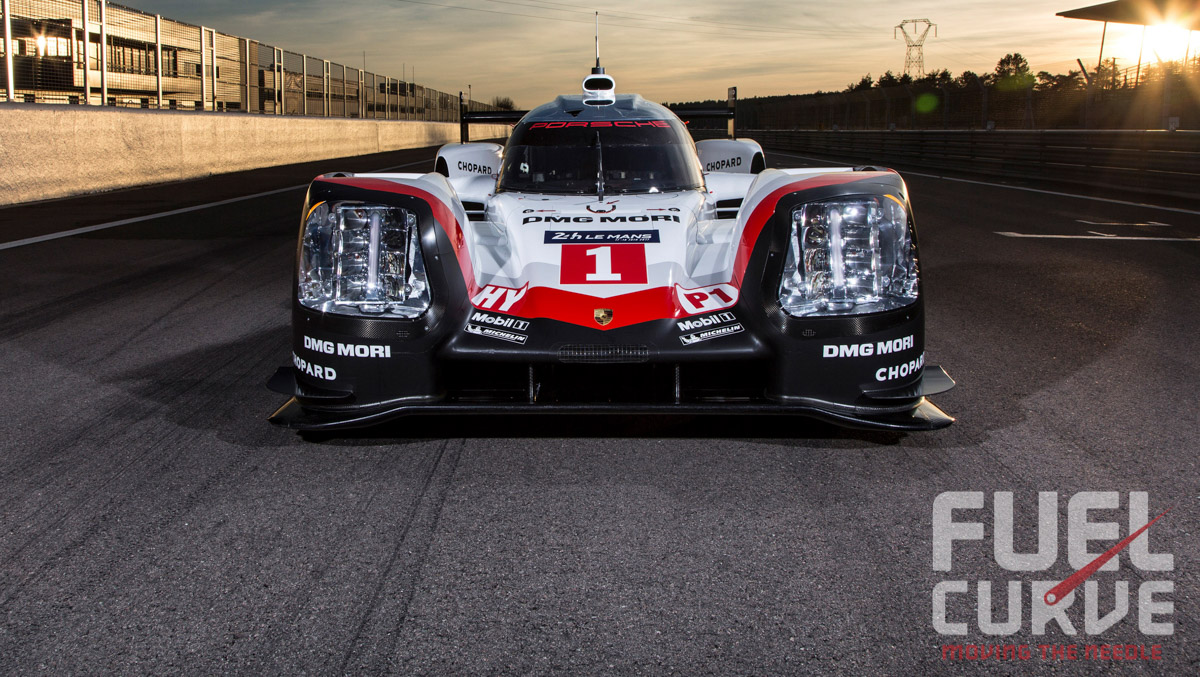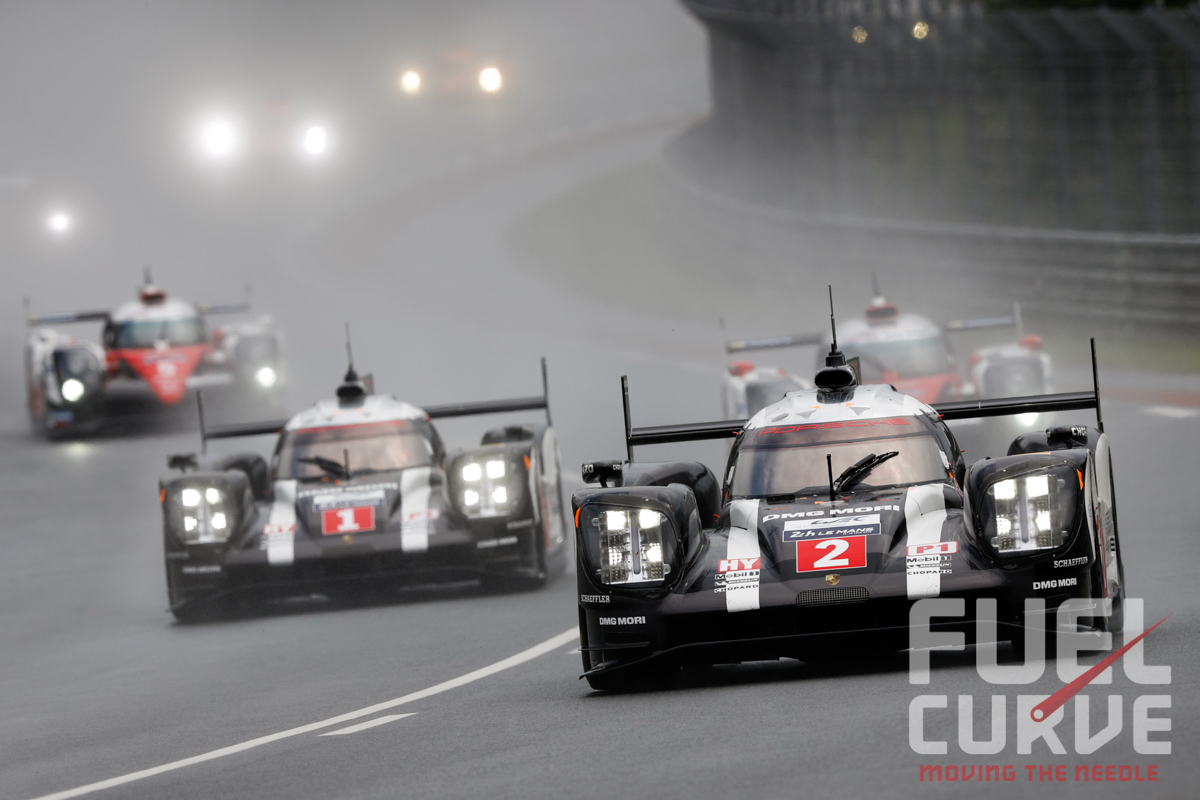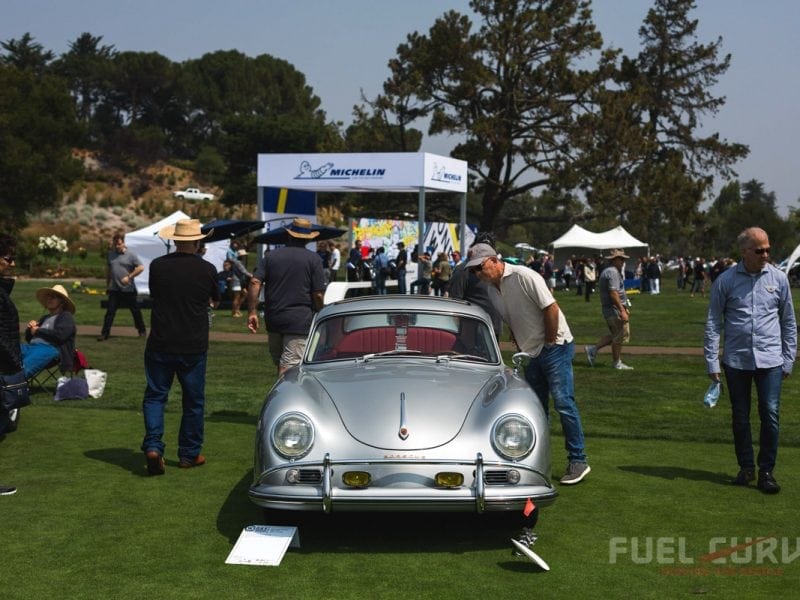Porsche Looks for Hat Trick – 24 Hours of LeMans
By Gary Medley
Photos Courtesy of Porsche
While diesel and hybrid gas-electric technologies have emerged as legitimate weapons in the fight to clean up automotive emissions (VW TDI-motors notwithstanding), diesel-hybrid power plants also dominate the most prestigious sports car race in the world, the 24 Hours of Le Mans. And Porsche has developed the most potent machine marrying those two technologies.
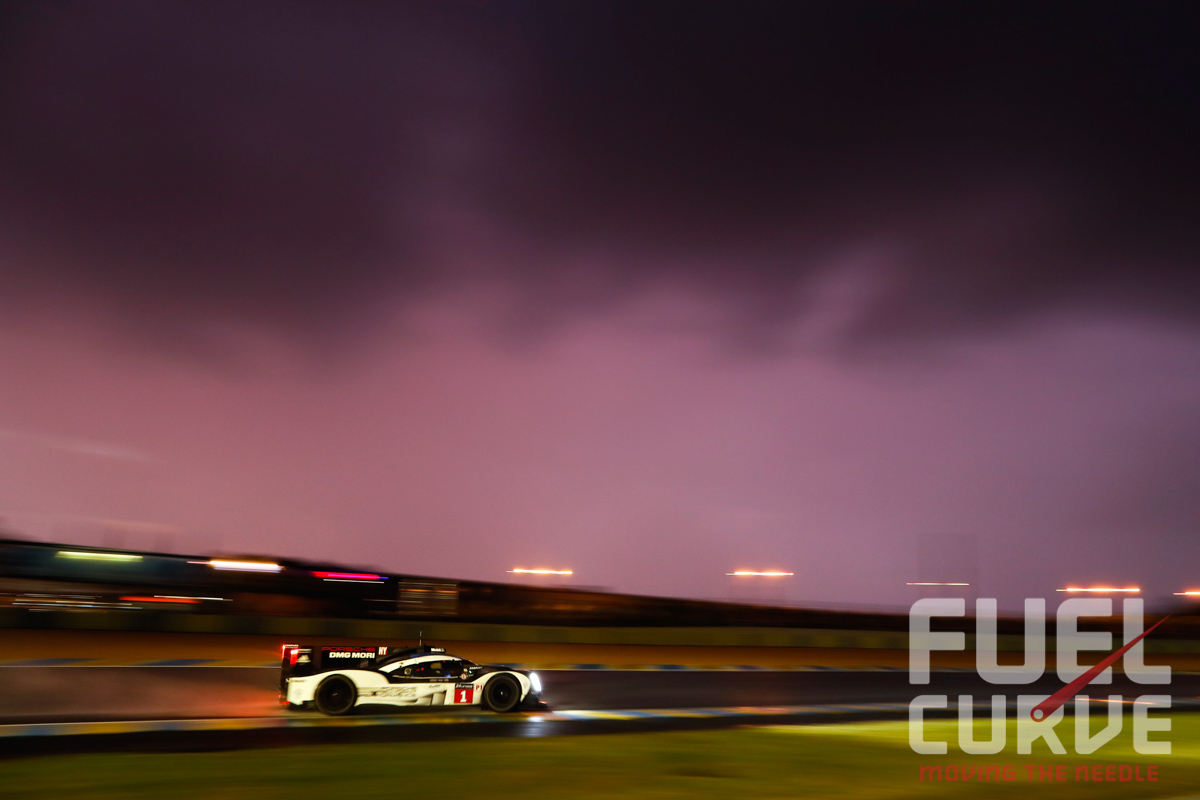
The Porsche 919 Hybrid prototype is the two-time defending champion of the
French classic, capturing the 2015 and 2016 editions ahead of the diesel-hybrid challengers from Audi and Toyota. This weekend, Porsche is shooting for the “hat trick” — a third consecutive overall win.
Sure, the on-track success is impressive, but the technological wonders under the 919’s sleek carbon fiber skin are even more so. At a glance, the 919 appears to be more space ship than race car. When seen in the pit stall, bodywork removed, white lab-coated clad technicians scurrying about, the first impression is disorienting. What is it? That’s a sports car?
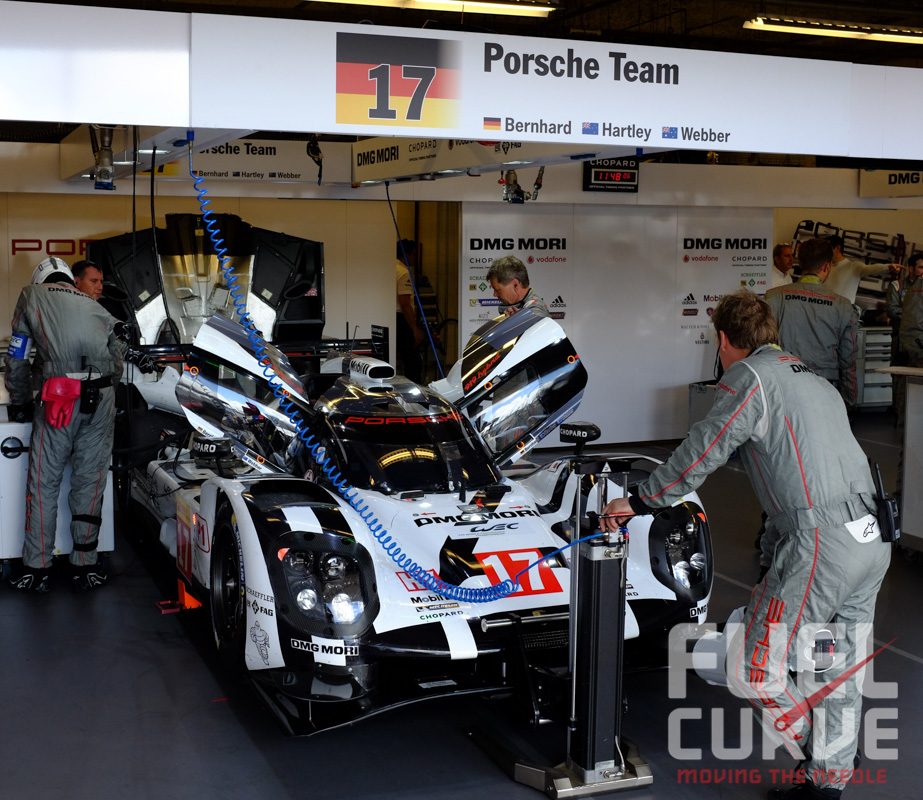
Here’s a closer look at how Porsche’s diesel-hybrid technology works.
The basic components of the 919 include transmissions on the front and rear axles, an internal combustion engine, an electric motor, and two energy recovery systems. The rear axle of the 919 is driven by an extremely compact two-liter V4 combustion engine, featuring compact turbo technology with efficient direct fuel injection; it puts out a tidy 500 hp. (Porsche claims it’s their most efficient combustion engine ever.)
But wait, there’s more. Much more. The V4 output is bolstered by two different energy recovery systems – a braking energy recovery system on the front axle, plus an exhaust energy recovery system. Together, these systems feed a lithium-ion battery, which powers an electric motor that delivers an additional 400 ponies to the front axle, on demand.

Porsche’s system is unique, as it recovers energy during acceleration as well as braking. The combined power systems kick out more than 900 hp! Moreover, the enormous traction generated when the car accelerates, with that extra 400 hp at the front axle, transforms the 919 into a land-based, all-wheel-drive rocket-ship. Prius owners, eat your heart out.
The energy recovery systems are indeed marvels. In Porsche’s words, “Approximately 60 percent of the recovered energy comes from the KERS (Kinetic Energy Recovery System) on the front axle brakes. The remaining 40 percent is generated by the exhaust energy recovery system. An average of 80 percent of the braking energy recovered from the front axle is immediately converted into drive energy.”
Since Le Mans is an endurance race, time spent in the pits over the 24 hours can be the difference between winning and losing. The advantage of diesel-hybrid technology is improved fuel efficiency — meaning more racing around the 8.4-mile Circuit de La Sarthe, as the track is officially known.

Again, let Porsche explain: “If the combustion engine alone was required to supply this amount of electrical power, it would need to boost its output by more than 100 hp, which would increase the fuel consumption of the 919 by more than 20 percent. At Le Mans, this would equate to an extra liter of fuel per lap. A further advantage of the highly efficient recuperation system is that it enables the 919 to perform with smaller and lighter brakes – a characteristic that not only reduces weight but also air resistance, as smaller brakes require less cooling air.”
Exhaust energy is recovered via a small turbine fitted in the exhaust piping. According to Porsche, this turbine runs at a swift 120,000 rpm and powers a generator that pumps more juice back into the lithium-ion battery, until needed. Then, with a push of a button, the driver can unleash that energy on demand – using it, for example, to boost acceleration out of a corner — while at the same time feeding, even more, energy from the exhaust gasses back into the system. While not a perpetual motion machine, it’s close.
So, when you tune in to watch Le Mans this weekend (Fox Sports 1: Saturday, 8:30 a.m. to 10 a.m.; Fox Sports 2: Sunday, 1 p.m. to 1:30 a.m.; Fox Sports 1: Sunday, 1 to 9:30 a.m.) look beyond the pageantry, the bucolic French countryside, and the round-the-clock party reveled in by the 250,000 fans. Instead, consider the sophisticated diesel-hybrid technology propelling those gorgeous prototype Porsches around the track. Soon, those systems could soon deliver the same benefits to the family SUV and passenger car.
